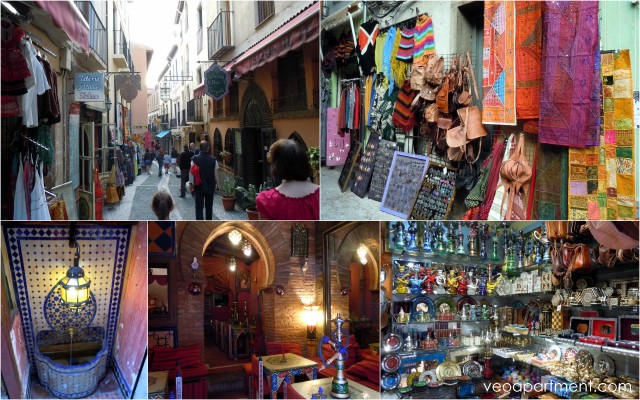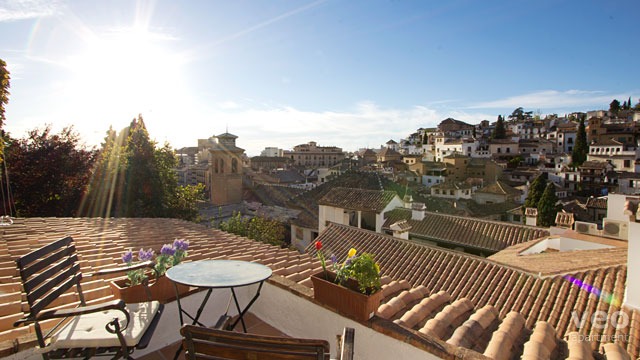It’s been a long, wet winter, but at last Spring seems to be just around the corner. This is the best time to come to the south of Spain, and to one of its most popular destinations, the city of Granada at the foot of the Sierra Nevada.
You will of course be paying a visit to the Alhambra, the magnificent palace fortress of the Moorish kings, and to the Generalife (top tip – have a drink on the terrace of the Parador hotel looking across to the Generalife), but what are you going to do for the rest of your stay?

First option is to make your way up through the Moroccan market into the Albaicin, the old Arab quarter of the city with its picturesque steep, narrow streets to the San Nicholas Mirador for a view across the valley of the River Darro to the Alhambra and the snowy peaks of the Sierra Nevada beyond. It’s also worth walking up the river valley from Plaza Nueva, the classic Spanish square in the heart of the city. It still looks like the mountain stream it was, but now with houses perched on its high banks below the steep hill of the Alhambra. Going further brings you into the Sacramonte neighbourhood, famous for its gypsy community, cave houses and flamenco night-life (nowadays mostly for tourists, but still an unmissable experience).
On the other side of the Alhambra is the old Jewish quarter of the Realejo, now a busy neighbourhood of bars and restaurants. Between the Realejo and the Alhambra you can find the Carmen de los Martires, one of Granada’s less well known gems. Carmenes (houses with walled gardens) are typical of Granada, and there are quite a few of them, often now functioning as hotels and restaurants rather than private houses, but Los Martires is the grandest, with several acres of gardens laid out around a 19th century country house.
 view from our Carmen Terrace 2 apartment in Granada
view from our Carmen Terrace 2 apartment in Granada
At the foot of the Realejo, as you get back to the centre is the Corral del Carbón, originally built as a coal warehouse way back in the Moorish period, but adapted in the 16th century for theatrical performances (these courtyard theatres are roughly contemporary with Shakespeare and the birthplace of Spanish theatre). Pay your respects at the Royal Chapel and Cathedral, then take a walk along the Alcaicería, once the Moorish silk market, but now mainly little souvenir and artesan shops, but still with a Morroccan feel to it.
Behind the Cathedral is the Plaza Bib-Rambla, Granada’s largest public square, and an important commercial space since mediaeval times, and also the location of bullfights and autos-da-fé. Nowadays it has many cafés and restaurants in the colonnades around it, and in the centre is the Fountain of the Giants, added in the 19th century. From here, take a walk up through the Bib-Rambla neighbourhood to the San Jeronimo monastery. Built in the period following the Reconquista, it’s a calm and peaceful oasis with its two cloisters full of orange trees and magnificent altarpiece. It’s also the burial place of El Gran Capitán, Gonzalo Fernández de Córdoba, who led the Spanish forces that conquered Granada.
Finally, for something completely different, pay a visit to Granada’s famous science park. The interactive displays and exhibits are child-friendly and great fun as well as fascinating, dealing with everything from the birth of the universe to the diversity of life.
For more information about Granada, and some great holiday apartment rentals visit our website.